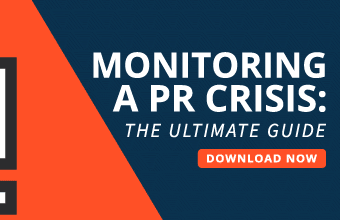Every year brings increasingly rapid changes for many industries, and public relations is no exception. As we look toward 2020, two key areas—crisis management and healthcare communications—may be among those experiencing the most dramatic shifts for PR professionals.
Crisis and reputation management continues to evolve as the media battle for online click and social media communities become even more polarized. At the same time, the healthcare landscape is experiencing change at a pace never seen before.
All of this suggests it’s worth considering the following key trends that will drive communication in these two areas as we enter 2020:
Crisis management trends
-
Data Drives Decision Making
In years past, crisis management came down to the experience and judgement of the counselor and team addressing the issue. Little data was available in fast moving, uncertain situations. Today, that is no longer the case. Increasingly, predictive search analysis and other tools are allowing for anticipatory crisis preparation, informed message development, and real-time response measurement. The days of guessing which way the wind might blow are behind us. Leveraging this technology will only become more necessary as we move into 2020 and our increasingly digitized world.
-
Practice Makes Perfect
Having a three-ring binder on the shelf—or a PDF document on the intranet—was once considered sufficient crisis preparation. However, in today’s viral click-bait media environment, issues don’t always evolve in the same way twice. For that reason, training and practice are critical. Crisis teams must engage in regular simulations and exercises to ensure functionality of and familiarity with the crisis protocols, test infrastructure capacity and that corporate culture aligns with the prescribed steps.
-
We’re All in it Together
As companies engage more deeply with an increased number of vendors and partners, risk factors rise exponentially. Collective risk management should now be a consideration in planning and response. Companies should understand the risk management plans in place for each of their partners and ensure that sufficient protocols exist to allow for shared identification, management and risk mitigation.
Healthcare Communication Trends
-
Healthcare Challengers
2010 – 2019 was the decade of healthcare industry mergers and acquisitions, and we saw nontraditional healthcare companies challenging those already innovating in the industry. Just this year, we saw tech giants, such as Amazon and Facebook, launch pilot programs and new initiatives offering more affordable and accessible healthcare solutions, ensuring patients in 2020 will have more healthcare options than ever before. This means as communicators, we will need to be more strategic with our messaging and communications channels than ever before, as the environments we communicate with our patients, advocates and industry leaders will become increasingly more saturated.
-
Increase in Consumerism
Up until recently, we’ve treated patients like patients. But with the increase of digital tools, patients will be making healthcare choices and will expect the level of service to parallel the other industries in their everyday lives. Patients want quick access to healthcare services and resources just as Amazon promised a 2-day delivery with Prime. Even more, they’ll be paying closer attention to reviews and online surveys, making decisions similar to how they plan a trip with TripAdvisor or select a restaurant on Yelp.
-
Influencing Healthcare
Utilizing celebrities or social media influencers is not a new concept for the public relations industry, but healthcare has been slow to adapt. Expect a significant increase in 2020 of influencers identifying as patients, sharing their stories, promoting over-the-counter products or raising awareness of disease states. These influencers will bring a new third-party credibility to healthcare that will change how people access healthcare or consider support/treatments.
As we ring in the new decade, it’s a good time to prepare for the exciting changes on the way in 2020, and public relations professionals would do well to consider how these may impact client counsel in the coming year.








